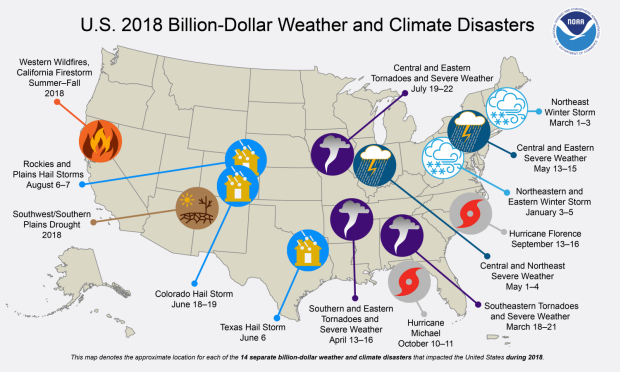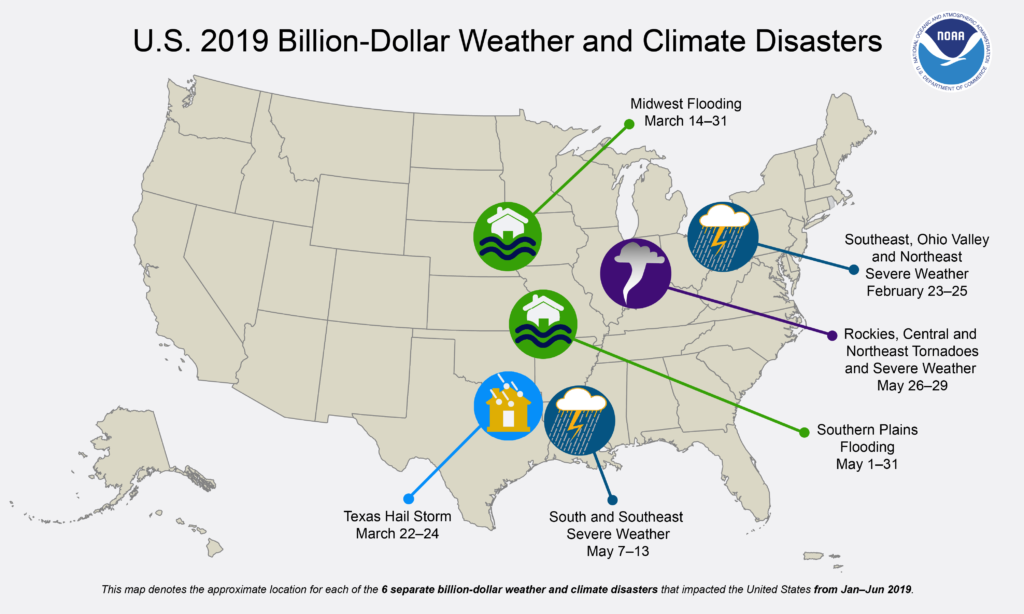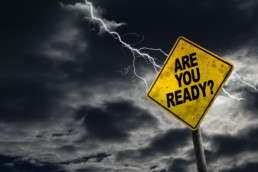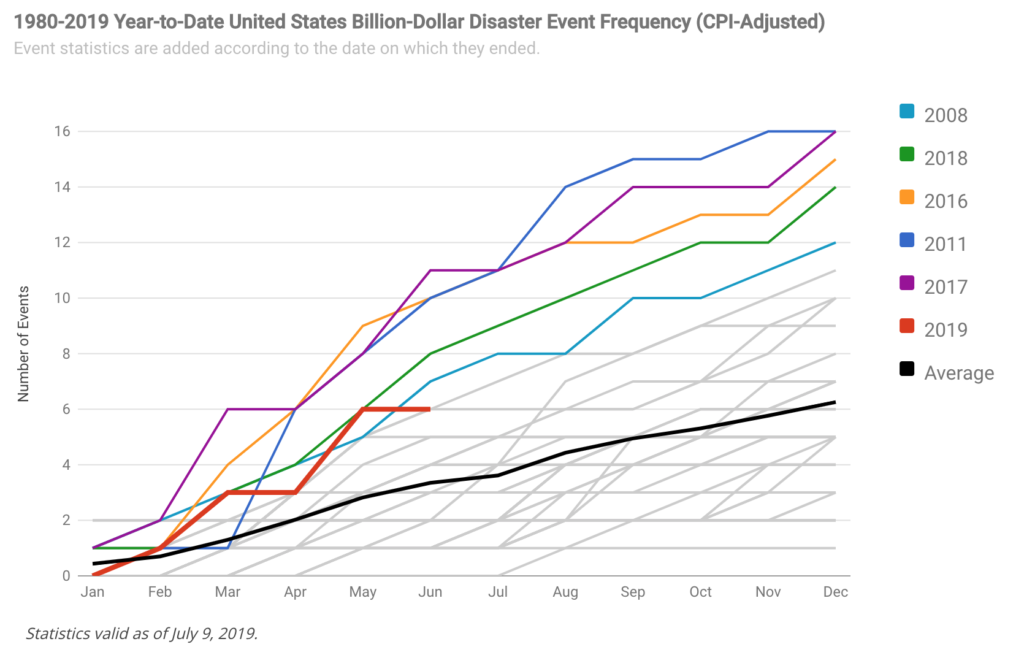Natural Disaster Relief Efforts: How You Can Get Involved?
Natural disasters cost the U.S. a record $306 billion in 2017 and $91 billion in 2018.Click To Tweet1
Rent Items is not just a marketplace for renting items for DIY projects, vacations, or events. Rent Items wants to play a major role in disaster relief efforts as well. When an area is hit by a hurricane, earthquake, wildfire, or flood unexpectedly, it needs a large number of resources quickly. Through the Rent Items’ community and marketplace, we can mobilize items that are needed temporarily from one city and bring them into another city impacted by a natural disaster.
Chart of billion-dollar natural disasters in 20182

Chart of billion-dollar natural disasters in 2019 thus far.3

The Cost & Rate of Natural Disasters Continues to Increase
The cost and rate of natural disasters will continue to increase which requires two complementary solutions. The chart below shows the frequency and cost of natural disasters.
Solution 1: Deal with Climate Change
Take preventative action to slow down and reduce the frequency of natural disasters by paying more attention to climate change and how we as a global society are impacting climate change.
Solution 2: Be Better Prepared for Natural Disasters
We are still not planning adequately for natural disasters. Since 1980, the United States has suffered 250 disasters with billion-dollar-plus price tags. The total bill tops $1.7 trillion, according to NOAA. The good news is we now have 72-hours notice when a hurricane will impact an area. The bad news is we are still doing a poor job in planning and responding for such an event.
Billion-Dollar Natural Disaster Event Frequency4
NOAA Billion-Dollar Weather and Climate Disasters: Table of Events
Mobilizing Resources for Natural Disaster Relief
We encourage people to use the Rent Items’ marketplace as a way to be involved in a community that can mobilize resources quickly in order to help others in need. Our goal is to take resources that are sitting idle and provide them to those that have critical needs. We believe there is strength in numbers – people and their items. We hope that all the members of our rental community are community-minded and willing to support those that are in need.
Reducing the Time and Cost of a Natural Disaster
Our hope is the Rent Items community can help reduce the amount of time for when disaster relief can be provided and reduce the cost of the relief through better planning and mobilization of resources.
The average American has over 300,000 items in their household.Click To Tweet5“We cherish things and accumulate them. We move them from shelf to shelf, and from home to home. The federal government estimates that a quarter of Americans with two-car garages don’t use them for automobiles. Even those without a permanent home carry their stuff around with them.”6
One out of every ten households in the country rents a self-storage unit.7 What are we doing with all this stuff?
Rent Items wants to take these resources and make them accessible to others. We want to put assets to better use instead of cherishing them and leaving them sitting idle in a garage or self-storage units.
Join Our Rental Community
If you are concerned about climate changes and experiencing a natural disaster in your area, now is a good time to join Rent Items and become a member of a community that cares about you. By getting involved with Rent Items, you can not only potentially be a contributor to natural relief efforts, but a recipient as well. Register today!
RentItems is a peer-to-peer rental marketplace. We help individuals and local business owners share assets they own by renting it to those in their local community or traveling to their city. Take items sitting unused in your garage, basement, self-storage unit, retail store, or warehouse and put it to better use. Become more sustainable by joining the sharing economy today and register at Rentitems.com.
- https://www.cbsnews.com/news/us-record-306-billion-natural-disasters-last-year-hurricanes-wilidfires/, https://www.cnbc.com/2019/02/06/natural-disasters-cost-91-billion-in-2018-federal-report.html
- https://www.climate.gov/news-features/blogs/beyond-data/2018s-billion-dollar-disasters-context
- https://www.ncdc.noaa.gov/billions/
- https://www.ncdc.noaa.gov/billions/
- https://www.becomingminimalist.com/clutter-stats/
- https://www.latimes.com/health/la-xpm-2014-mar-21-la-he-keeping-stuff-20140322-story.html
- https://www.nytimes.com/2009/09/06/magazine/06self-storage-t.html?em&_r=0


